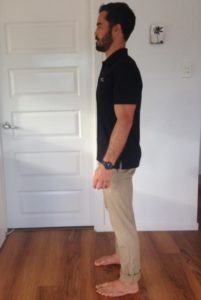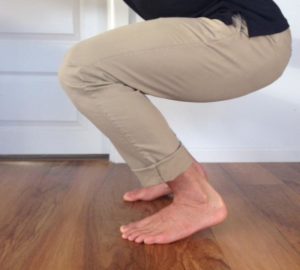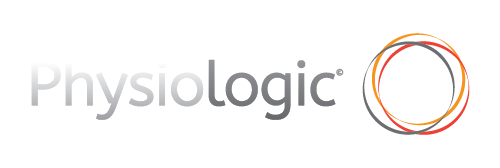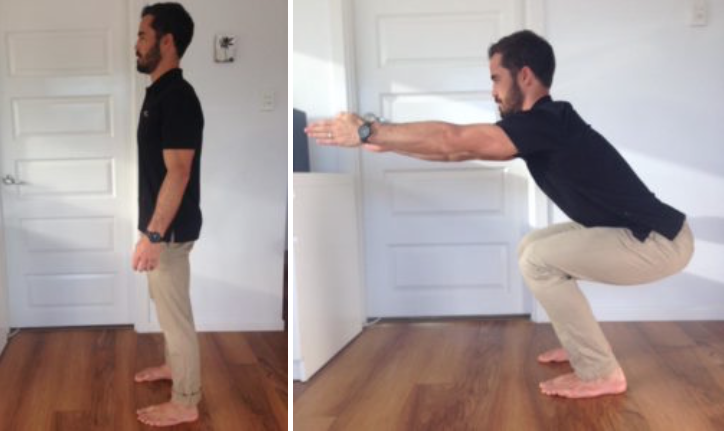Squatting is essentially just lowering your center of gravity and there are hundreds of different ways to do this. The most appropriate variation will depend on the individual context. The squat I would like to discuss is a variation I believe is a safe, efficient and effective way to squat in a gym environment where the purpose is to lift heavy, repetitively or quickly in order to develop strength, endurance or power.
I like to have the feet about shoulder width apart with the toes pointing straight ahead this decreases the likelihood of the feet and knees caving in which is common error in beginners. From this position simply reach your hips diagonally back and down as if towards the bottom corner of the room behind you. If you are not using weight it can be useful to reach your arms forward as a counter balance (figures 1 and 2).
Figure 1 Figure 2


A common misconception is that your weight should be on the heels when you squat. This belief often causes people to squat in an unbalanced and inefficient manner (figure 3).
On the other hand squatting so far forward that your heels lift completely off the ground puts unnecessarily large forces on the knees. Instead aim to be balanced between these two extremes with even pressure on the ground beneath the balls of the feet and the heels. A good way to find this position is to stop towards the bottom of your squat and shift your weight forward until your heels lift off the ground (figure 4) and then back until the toes lift (figure 5) and then shift your weight forward so that the toes are relaxed but so that the heels are still firmly grounded (figure 2).
Figure 3 Figure 4 Figure 5



The appropriate squat depth depends on your flexibility and coordination. If you attempt to go two low one of two things is likely to happen. Either you will lose the inwards curvature of your back (figure 6), which arguably in the context of a loaded squat isn’t ideal, or your ankles and knee will stop bending or even straighten as you continue to flex forward from your hip.
As a guide the angle of your torso should be close to parallel with that of your shins (note that this is different than a deadlift, which will require more torso and less lower leg angle). Simply lower as far as you can without the above or other technique flaws occurring and then return to the starting position. Make sure you fully return to a relaxed standing position (Figure 1).
Figure 6

In summary: place your feet shoulder width and pointing straight, reach your hips back and down while maintaining your weight over the center of your feet and then return to standing. We will discuss ways to load, progress, regress and add variation to this basic squat in future articles.

